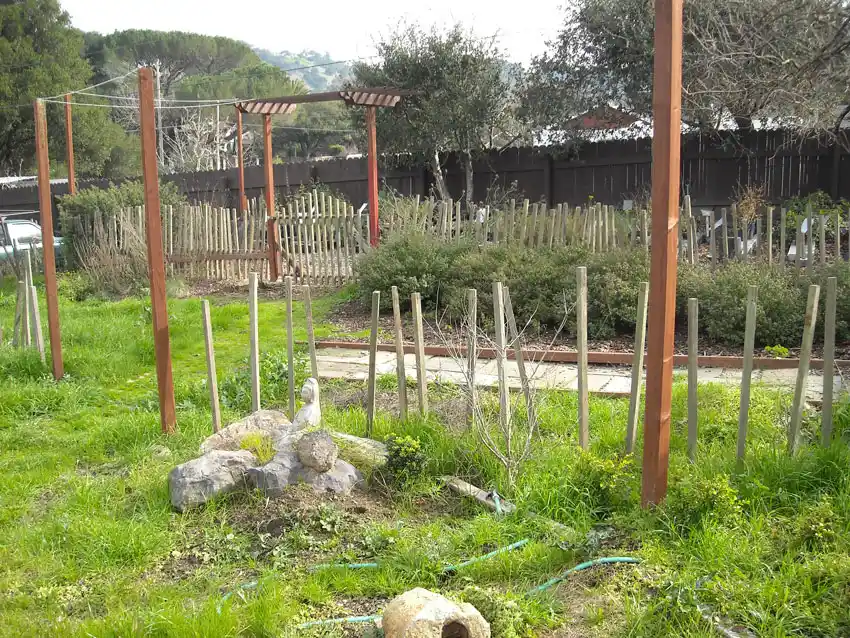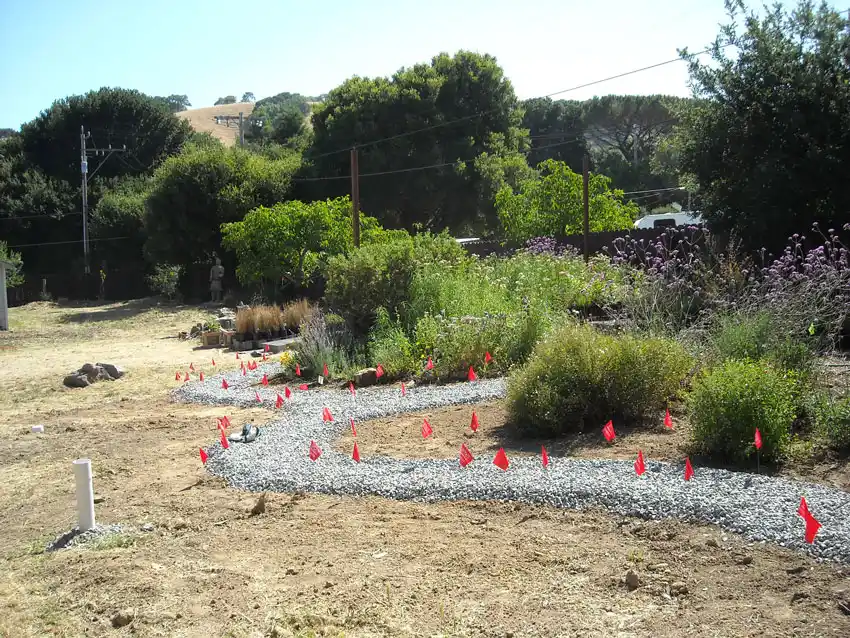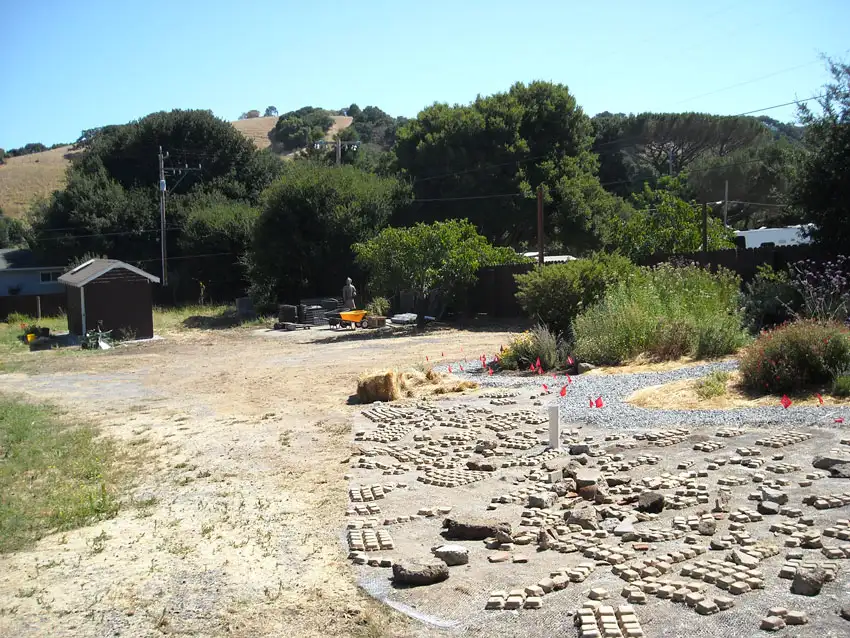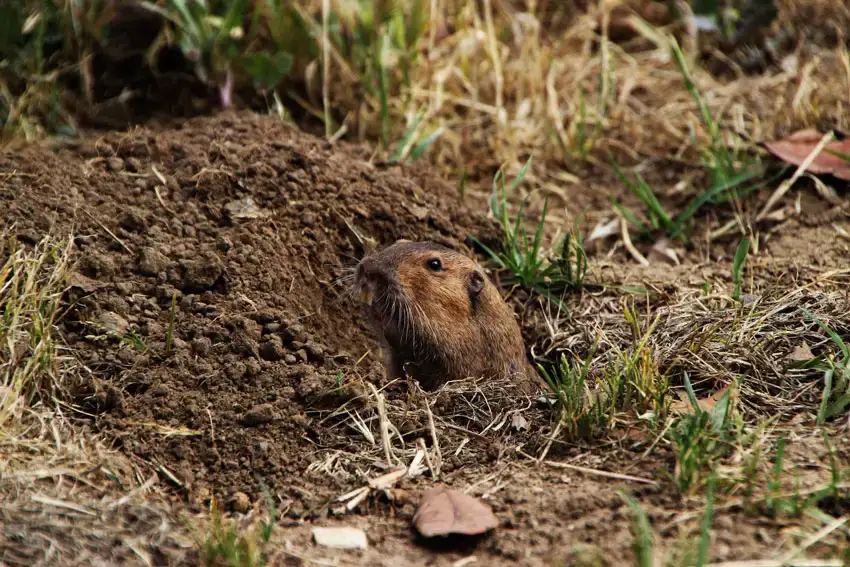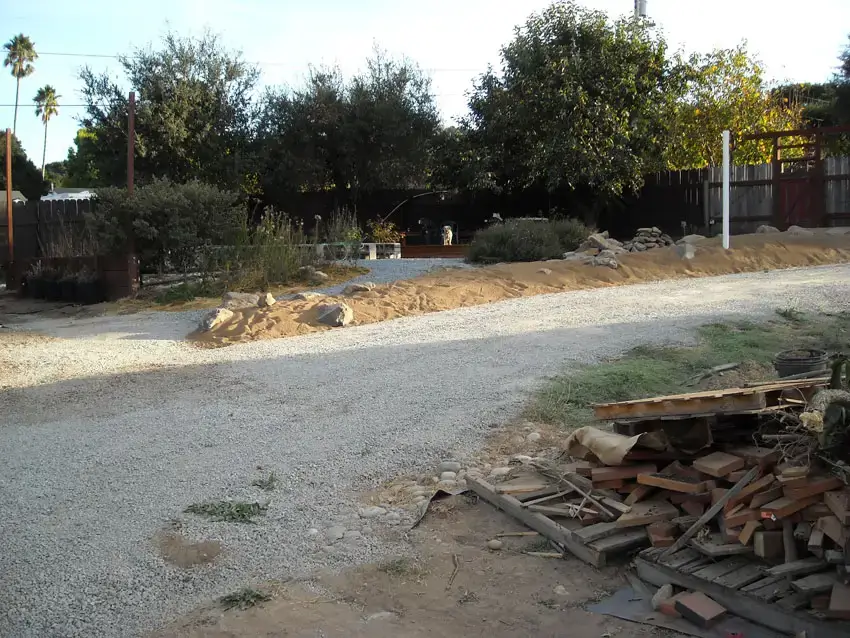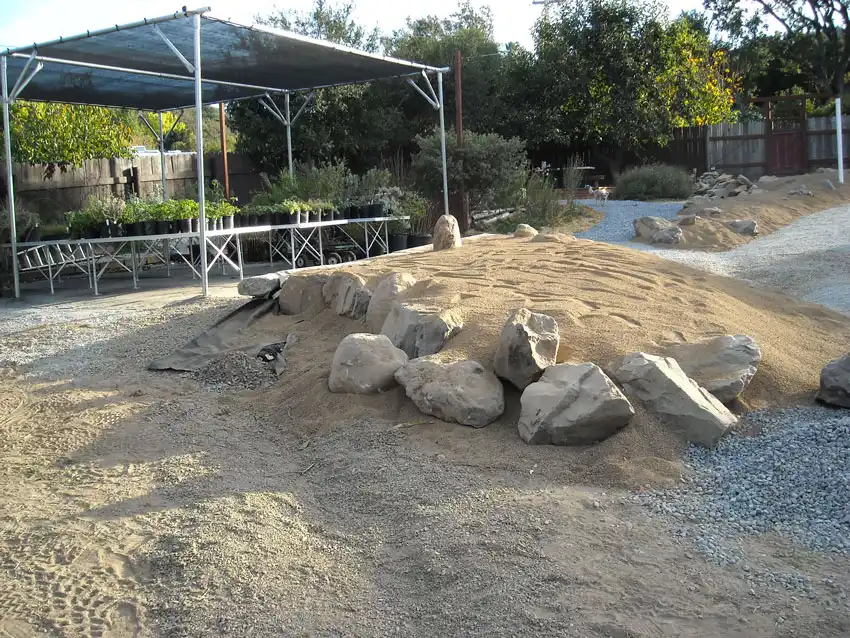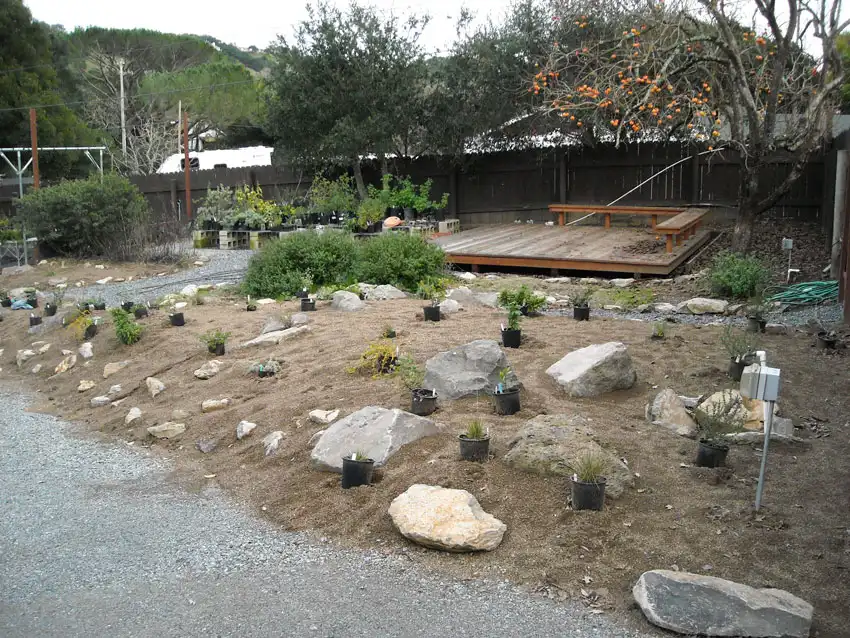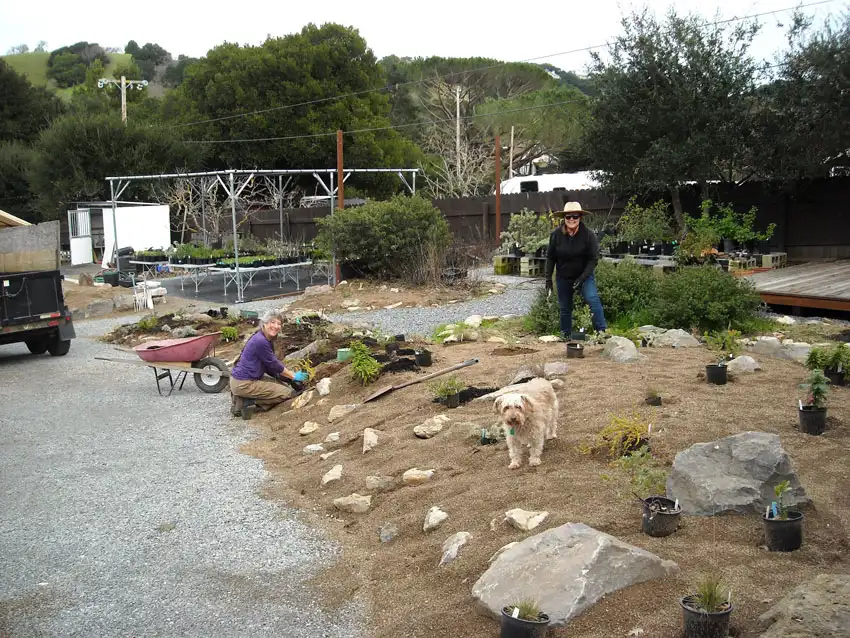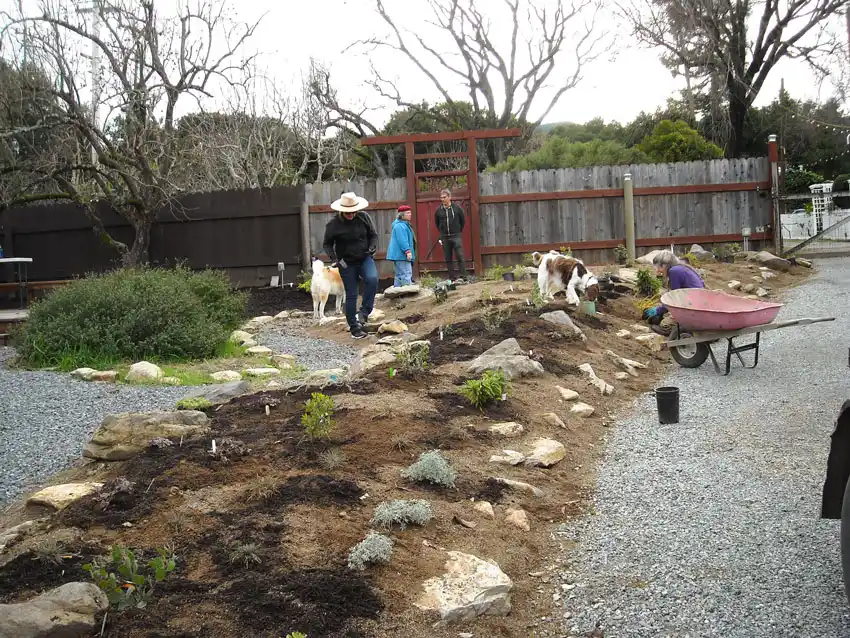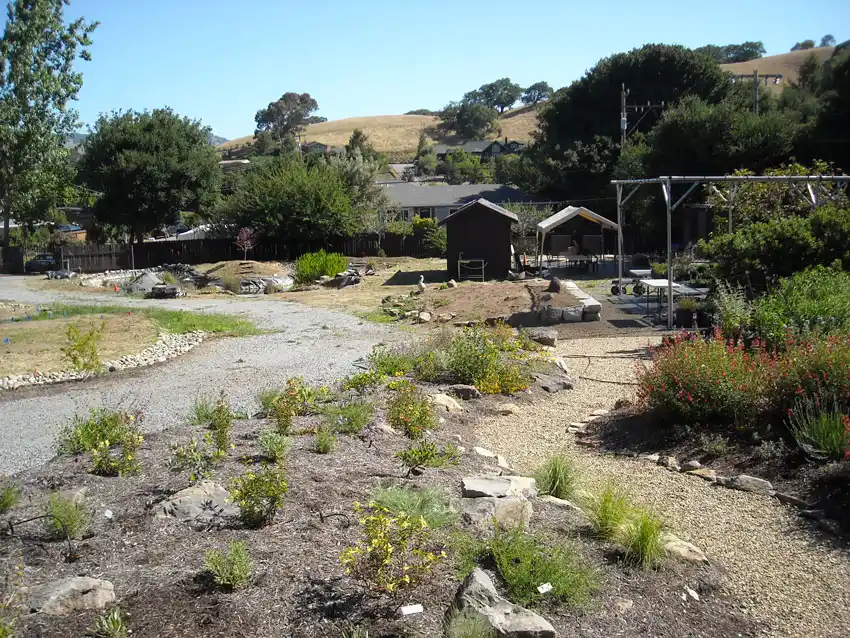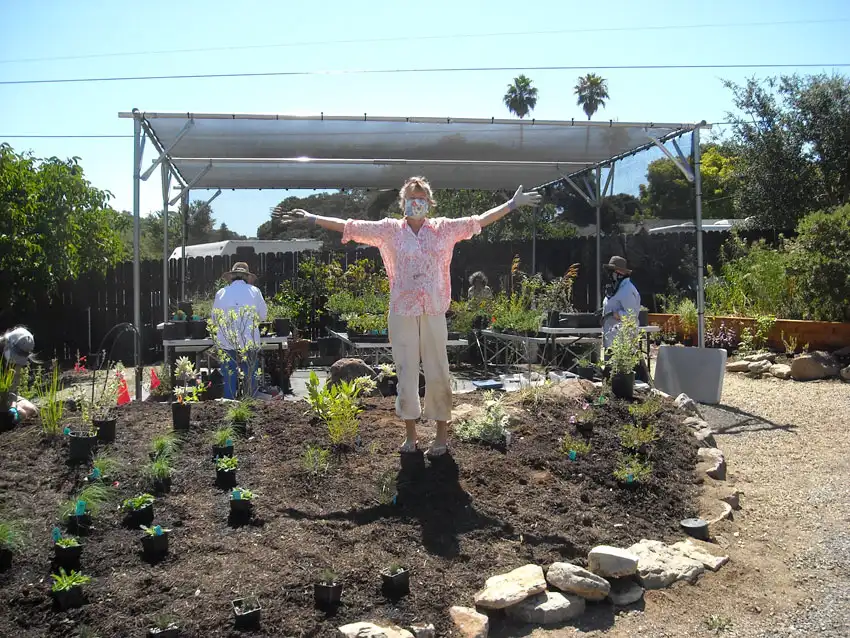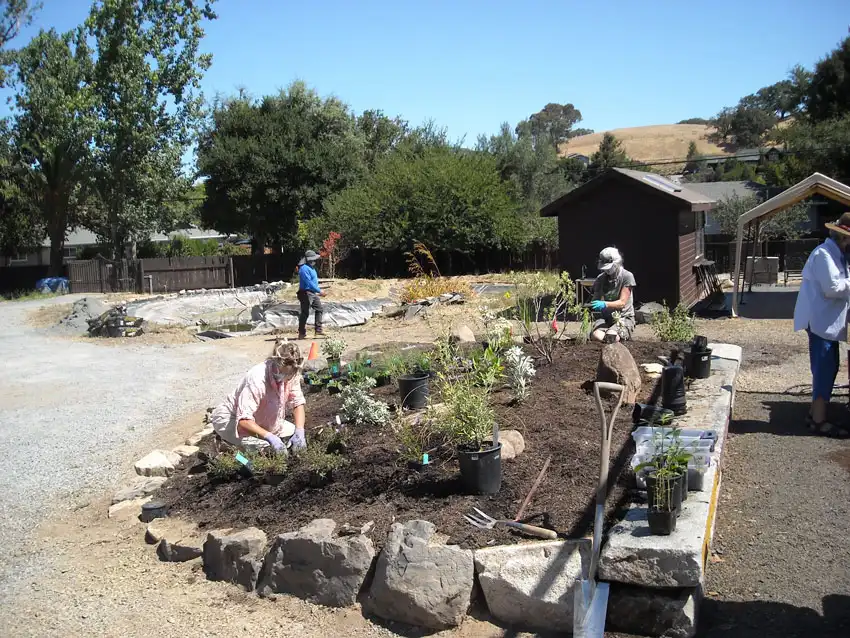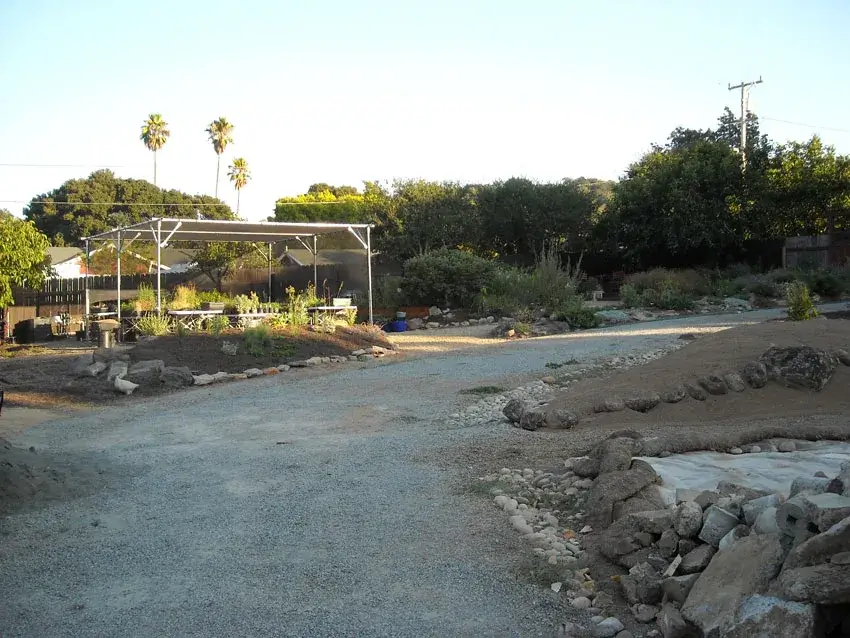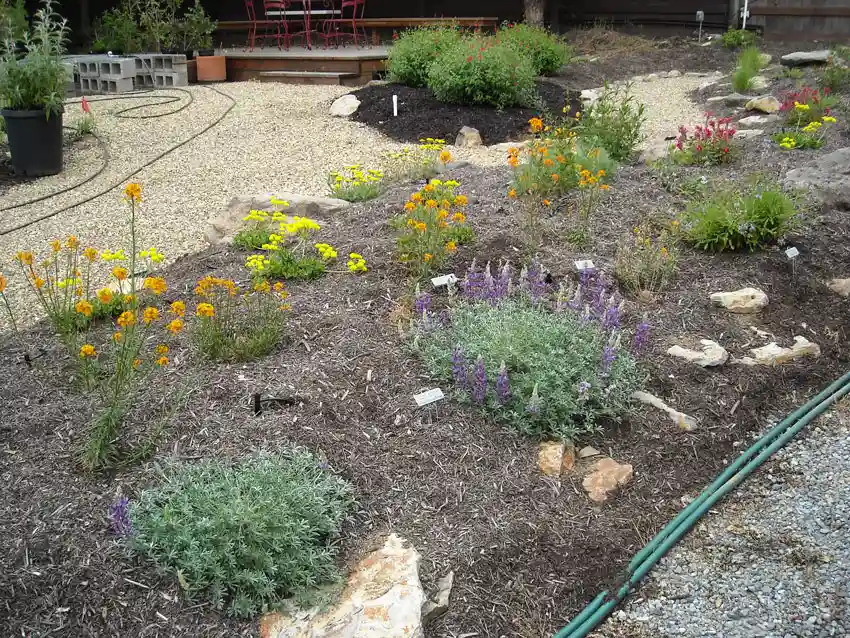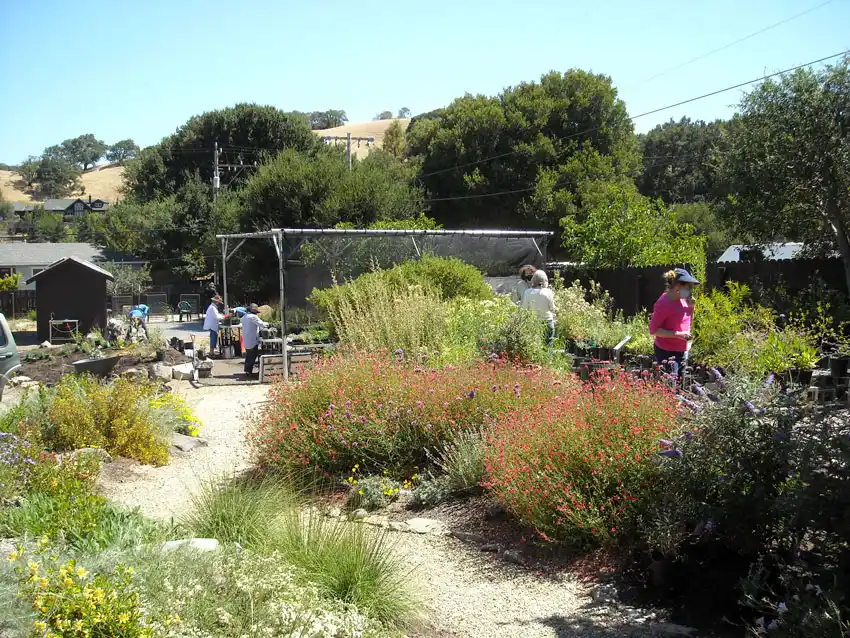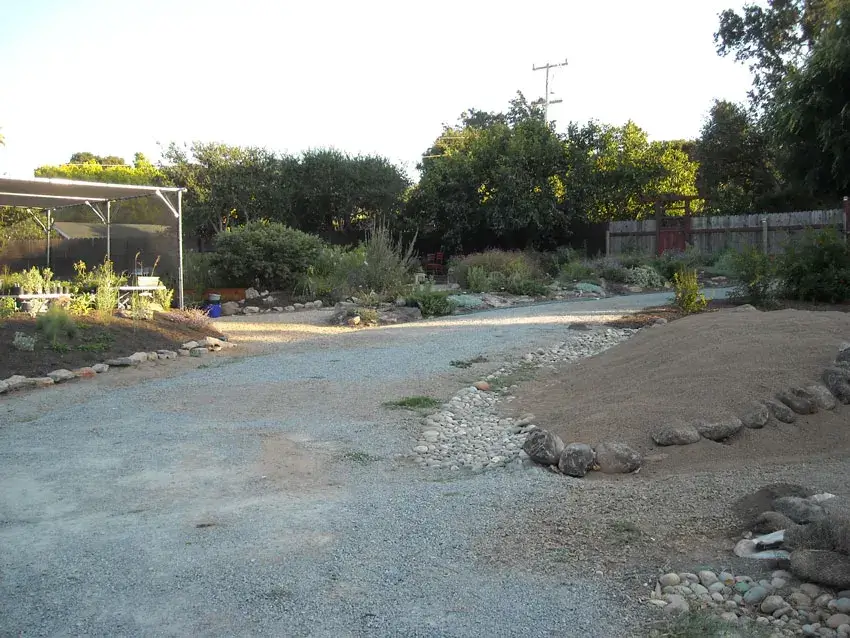Once we had the drainage issues taken care of we could start planning our demo gardens. We had to deal with a field of established weeds – seed banks and all – a healthy population of gophers – and plenty of ‘rubble’ and other debris from unfinished projects on the property.
We did an initial inventory of weedy species present, which amounted to about 60 species of flowering plants; the family most represented was the Aster family with 14 species, 8 in the Mustard family, and 8 in the Legume family, and about 9 species of non-native grasses. Some of the ‘weeds’ – Plantains, Cudweeds and Horehound – are actually good habitat plants, and we let them grow in controlled conditions. The worst weed, without any redeeming qualities, is Field Bindweed: We will have to be very persistent to eradicate it!
One of the best beginning steps in planning a garden is to define the pathways. By May of 2019, we laid out the first pathway, using drainage rock initially, and later added the more decorative pebbles on top.
Realizing that we had a gopher problem we went to great measures to ‘gopher proof’ the berm plantings; first tacking down chicken wire in the space intended for the berm; then laying down lots of broken stone and cement pieces to help build up the spine; and then bringing in our soil. Boulders and large rocks are brought in and are placed at the same time as the soil because they need to be dug in about 1/3 for a more natural look. Boulders help define spaces within the berm; smaller rocks help define the edges.
Our efforts only slowed them down! Gophers are interesting creatures: Destructive in gardens and cultivated fields: Constructive in the ‘wild’ where they bring up nutrients from below ground, and over time help to create meadows.
Building berms (raised planting areas) helps create good growing conditions with proper drainage, and fresh soils to help plants establish more quickly. Berms are also a great way to add more interest in an otherwise flat landscape.
We finished this first berm in May, and in October, and used the same technique for the second berm. We were lucky to find some wonderful old granite curbstones, originally from San Francisco, to place on one side, and then built up the berm from there. The soil we use in our berms is purchased from Marin Landscape Materials in Novato as ‘clean fill soil’; a sandy/clay loam that is ideal for native plants.
In January 2020, we set out plants in our large ‘Manzanita Berm’. We set them out in their containers, which allows us to ponder placements and plant associations for a few days before planting them. We planted about 15 different species, named varieties, and cultivars of Manzanitas along the ‘spine’ of the berm. All the plants included in this berm are California natives; no plant was larger than a one gallon, and many were in 4” pots!
Here’s Colleen and Carolyn planting the Manzanita berm in January of 2020. As we’re planting we top-dress each plant with a little ‘all-green’ mulch: California natives appreciate organic matter, but only from the top down, duplicating the ‘duff’ layer one sees in the wild. California natives are not used to a lot of nitrogen; ‘all-green’ compost is without animal manures.
Alan and Roseann are discussing the irrigation; and the dogs are there to support our work! We used one irrigation line along the spine with an emitter at each Manzanita; once these plants are all nicely established, they will not need the individual emitters, but will get a share of the water going to the other plants close by.
By May of 2020 plants in the Manzanita berm are establishing. To complement the Manzanitas we included Sticky Monkeyflowers, Lupines, several species of Buckwheats, Penstemons, Ceanothus, Ribes, and bunch grasses.
Plants were laid out in the curbstone berm in the same way: Plants in this berm are a combination of both California natives and complementary non-native habitat plants from other Mediterranean regions of the world. We used an in-line drip irrigation system in this berm.
Here’s Frances and Colleen doing most of the planting out in May of 2020.
By August of 2020, the plants are getting established; and in September we’re starting to build still more berms. At one location where we intended to create another berm we needed to get rid of a vigorous patch of Bermuda Grass first. We used a technique called ‘solarization’: Start at the first of summer by cutting and wetting down the weedy growth – then lay down a sheet of about 4 mil opaque plastic over the area. Be sure to secure all the edges tightly – and then let it cook! The hot summer sun over several months will kill most of the top growth and the roots.
By August of 2021, lots of our plantings are established; blooms are attracting lots of pollinators, the Milkweeds are hosting Monarch larvae.
Our volunteers, working close by, are enjoying ‘the buzz’ as they work tending our nursery plants.
Meanwhile, we’re defining still more berms on the orchard side of our central driveway. Boulders help define edges and create spaces for plant groupings; we look for stones and boulders with natural depressions that hold water for insects and birds. Cobble-lined swales help direct rainwater to our bog, and from there into our pond.


